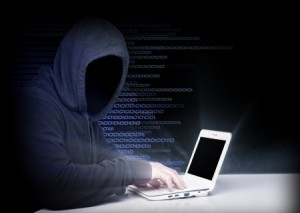 Smart Home Products And Vulnerabilities
Smart Home Products And Vulnerabilities
There are so many wonderful ways to stay connected through electronics. We aren’t going to stop progress, and in today’s society progress is centered around technology. Here’s the thing; with Smart Home technology it works with us and against us. It is a two way exchange and not always equitable.
We invite the world into our space when we use technology. I don’t mean just social media like Facebook, Twitter, Instagram and others. These are by design meant to bring in the outside world. We intentionally cater to the public, inviting them to partake in our personal news. We even want them to comment, approve or apply. Its a way of life that most of us take for granted. However, are we aware of how much we lay ourselves open to the less than trustworthy?
Are you aware of how vulnerable your personal life is from other sources? How about through your home thermostat or baby monitor? Would you think of either of these as gateways that would put yourself in harms way? Our new smart devices that most homes house, are not that “smart”. The manufactures do not design them securely and leave it up to the end user to figure out any security measures they need to take. Most of us are not that technically skilled. Even with simple re-sets, hackers find go-arounds using the product’s vulnerabilities.
Generally we’ve become aware of our home computers being an easy portal for nefarious intruders. Even knowing that, over 73,000 unsecured PC cameras streaming live video from private residences, covering over 256 different countries, were detected in 2014. Unsuspecting, ordinary people with an attitude that “it won’t happen to me” are invaded – and their security is compromised or even lost.
If any of your home technical equipment has an IP address with wireless capability, like your computer, your in-home printer, even some television sets have no protection, you are vulnerable. Smart home devices that close your drapes, or turn on your lights, heating and air conditioning, the entertainment system all can act as portals. Here’s a kicker, even your home security system is hack-able.
When purchased and installed the manufacture doesn’t set up each individual product to have password protection. Once a single apparatus is invaded, a hacker can follow the route through to your more personal devices and gain access to your private financial records and individualized information like you social security numbers and credit card numbers. This is the dark side to smart home technology. Imagine leaving your house unlocked with your most valuable possessions laying on the kitchen counter. It’s pretty much the same.
If someone can hack into your baby cam or security system then they have access to your computer. Or they can put malware on your computer. This author once was held hostage by what is known as ransom ware. I had to pay $150 to get my computer unlocked. I got off cheap, but this was back in the day before hackers were less sophisticated.
The solution: The marketplace has to demand the manufacturers of smart electronics to produce them with security features. The price will go up, so producers are not eager to be the first to jump on board. As a whole the customer is not yet well educated to the risks of being hacked at home. Without the pain it may take years for this to turn in favor of the end user.
Leave a comment below telling me what you think of smart home technology.